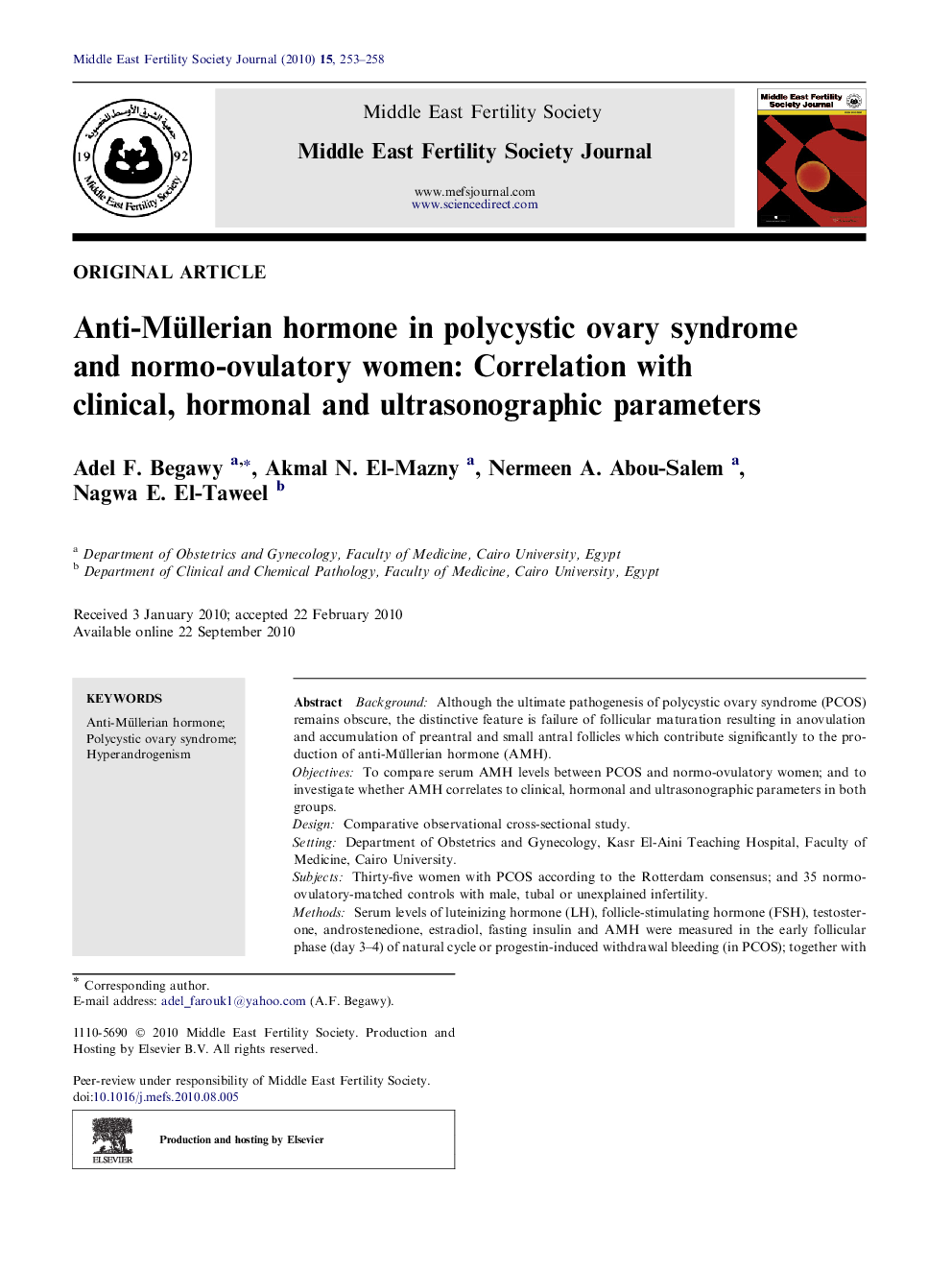| Article ID | Journal | Published Year | Pages | File Type |
|---|---|---|---|---|
| 3966393 | Middle East Fertility Society Journal | 2010 | 6 Pages |
BackgroundAlthough the ultimate pathogenesis of polycystic ovary syndrome (PCOS) remains obscure, the distinctive feature is failure of follicular maturation resulting in anovulation and accumulation of preantral and small antral follicles which contribute significantly to the production of anti-Müllerian hormone (AMH).ObjectivesTo compare serum AMH levels between PCOS and normo-ovulatory women; and to investigate whether AMH correlates to clinical, hormonal and ultrasonographic parameters in both groups.DesignComparative observational cross-sectional study.SettingDepartment of Obstetrics and Gynecology, Kasr El-Aini Teaching Hospital, Faculty of Medicine, Cairo University.SubjectsThirty-five women with PCOS according to the Rotterdam consensus; and 35 normo-ovulatory-matched controls with male, tubal or unexplained infertility.MethodsSerum levels of luteinizing hormone (LH), follicle-stimulating hormone (FSH), testosterone, androstenedione, estradiol, fasting insulin and AMH were measured in the early follicular phase (day 3–4) of natural cycle or progestin-induced withdrawal bleeding (in PCOS); together with transvaginal sonography for detection of the number of small follicles (<10mm) and calculation of ovarian volume.Main outcome measuresCorrelation between AMH and clinical, hormonal and ultrasonographic parameters in both groups.ResultsAMH was significantly higher in the PCOS group. In the whole group of patients and in each group separately, AMH was positively correlated to LH, LH/FSH, number of follicles <10mm and ovarian volume; and negatively correlated to FSH. No correlation was found between AMH and age, BMI, estradiol or fasting insulin. Testosterone and androstenedione were positively correlated to AMH in the PCOS group exclusively (r=0.557; P=0.001 and r=0.451; P=0.007, respectively). Multiple regression analysis demonstrated that testosterone was the only determinant for AMH level (r=0.485; P<0.001).ConclusionsHyperandrogenism is associated with increased AMH secretion in PCOS patients, possibly due to increased number of small antral follicles. Assessment of AMH levels before and after the treatment of hyperandrogenism should be recommended in the plan of management of PCOS.
